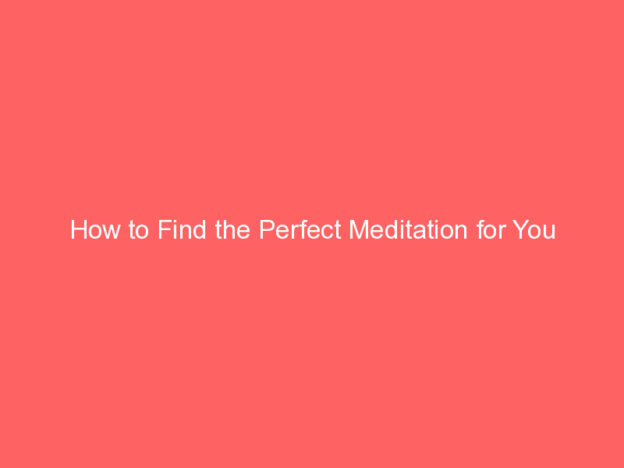Perfection is odd so there’s probably no such thing as the perfect meditation for you. But you can certainly get close to it.
Apart from anything else, your mood changes during the day and during the year.
So the perfect meditation on a cold winter morning probably won’t be the same on a nice summery day.
But, then again, it could be.
You know yourself better than anyone else. Go with your initial reaction – it’s almost always correct, especially on subjective matters like this where you could otherwise spend hours deliberating.
Go with your preferred learning style
Most of us have a preferred learning style and that will apply to meditation as well.
If you “see” things then the chances are you’re visual and even if the process gets you to close your eyes part way through, you’ll probably appreciate using a video like this one to get your meditation moving in the right direction. Or there’s a chance that you’ll be happy with a more traditional method of meditation such as staring at a spot on the ceiling or a flickering candle whilst allowing your mind to quieten down.
If you mainly work on gut instinct then a meditation that has you feeling things will likely be best for you. In which case a meditation that works with your energy and helps channel it will be good. Or you could try something like a walking meditation – even better if you’re a mix of visual and gut instinct as you can get the best of both worlds.
Which leaves people who “hear” as their primary learning style. If that’s you then I’d strongly suggest that you do what I do (even though I’m primarily a visual person) and listen to an audio meditation like this one.
Stick with it
Like most things in life, it pays to be persistent when you’re finding the perfect meditation technique.
Don’t just try a method once and then give up on it unless it really isn’t for you.
Think about all the things you like now that you didn’t like when you were younger. And vice versa with the things you used to like as a child and which no longer excite or interest you in the same way.
So persist with any new meditation technique you try out.
I’d suggest at least a week, ideally longer.
That way you’ll figure out whether or not it’s something you’d like to use longer term.
Which brings me on to the next point…
Keep a journal
It doesn’t have to be a full blown journal.
But it’s worth keeping track of things like how you feel, your energy levels and your reaction to the meditation method you’ve chosen.
It’s easy to forget how you felt a week or two ago – try remembering now how you felt last week on a day by day basis.
Which means that a journal is a great way of keeping track.
Last thing at night, jot down a few things about your feelings. Ideally, for some extra law of attraction style mind programming, include at least three things that happened during the day that you’re gratfeful for.
And when you wake up in the morning, jot down how you feel as well. Whether your sleep was refreshing, any dreams you can remember, that kind of thing.
Then look back over your journal before deciding whether the method you’ve chosen is the best one for you.
Ask a friend
Often, friends notice things before we do.
They’re not with us 24/7, so small changes often stick out.
If your friends think you’re more chilled and more relaxed, there’s a good chance your regular meditation is working. Even if you’ve not noticed the often subtle changes that occur.
If you’re still not sure where to start…
The trick is to start somewhere!
You may not find the perfect meditation the first time you experiment. Or you might.
But if you don’t start, you definitely won’t find it!
This meditation is the best starting place I’ve found and works for lots of people.
Good luck!








